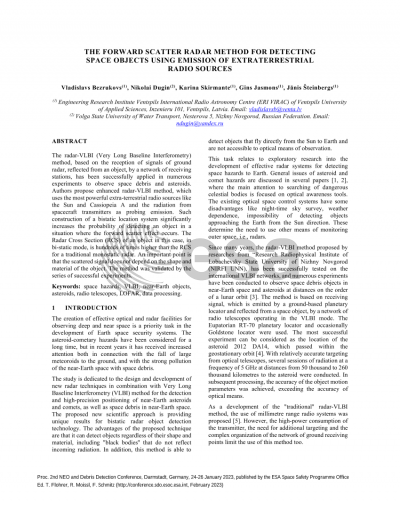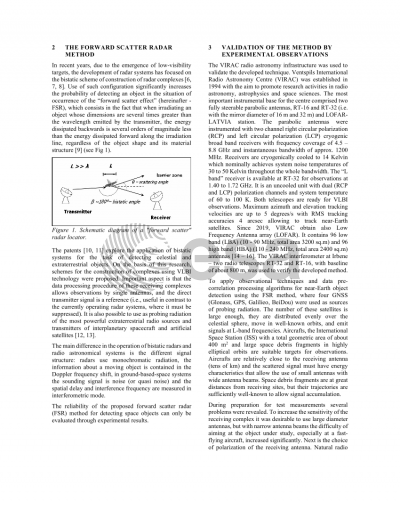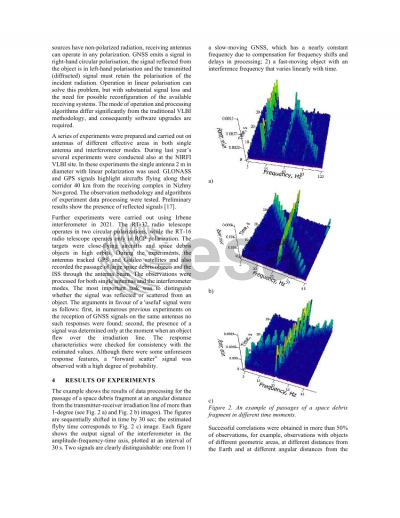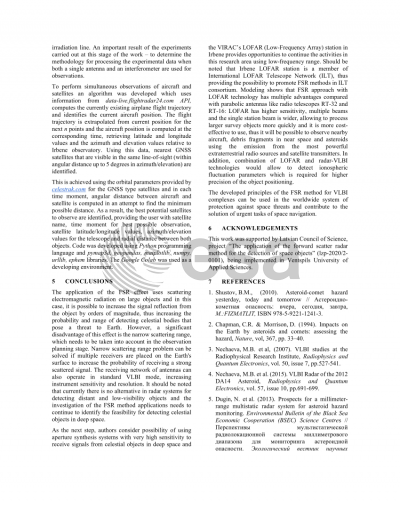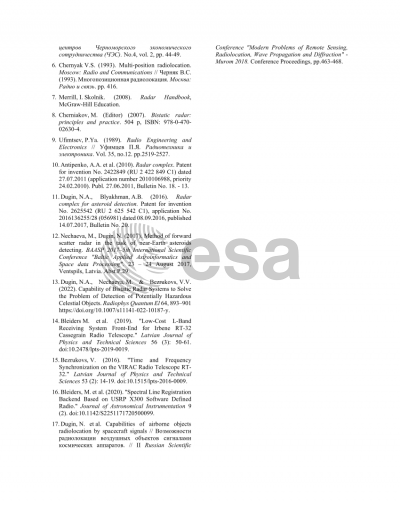Document details

Abstract
The creation of effective optical and radar facilities for observing deep and near space is a priority task in the development of Earth space security systems. The asteroid-cometary hazards have been considered for a long time, but in recent years it has received increased attention both in connection with the fall of large meteoroids to the ground, and with the strong pollution of the near-earth space with space debris. The existing optical space control systems have some disadvantages like night-time sky survey, weather dependence, impossibility of detecting objects approaching the Earth from the Sun direction. These determine the need to use other means of monitoring outer space, i.e., radars.
The authors experimentally investigate the radar-VLBI (Very Long Baseline Interferometry) method, based on the reception of signals of ground radar, reflected from an object, by a network of receiving stations, operating in the VLBI mode. The method has been successfully applied in numerous experiments to observe space debris and asteroids. However, the large energy consumption of the planetary locator and limited availability of such systems constrain the application of the method in this version.
The enhanced radar-VLBI method uses the most powerful extra-terrestrial radio sources (like the Sun and Cassiopeia A) and the radiation from spacecraft transmitters as probing emission. Such construction of a bistatic location system significantly increases the probability of detecting an object in a situation where the forward scatter effect occurs. This effect consists in the fact that when an object is irradiated, the dimensions of which are several times larger than the wavelength emitted by the transmitter, the energy scattered backward is several orders of magnitude lower than the energy scattered forward along the irradiation line. The Radar Cross Section (RCS) of an object in this case, in bi-static mode, is hundreds of times higher than the RCS for a traditional monostatic radar. An important point is that the scattered signal does not depend on the shape and material of the object.
A series of experiments was carried out to test the forward scatter radar method at observation of the passages of space debris objects of various sizes and in various types of orbits. Thus, the results of experiments on the application of new principles of radar-VLBI fulfil expectations.
The authors propose to use bi-static radar systems for monitoring outer space using available terrestrial transmitters, spacecraft transmitters, as well as signals from natural space radio. A scheme of a radar complex that uses correlation processing of a direct radar signal with a signal scattered from an object is proposed. This concept allows observations both in the VLBI mode and with single antennas.
To solve the problem of detecting potentially dangerous for the Earth asteroids flying from the direction of the Sun it is proposed to use large low-frequency antenna arrays such as LOFAR that operate in the range from 10 to 240 MHz. One of the LOFAR stations is operated by VIRAC together with the large 32 and 16 metre parabolic antennas operating in the L- and X-bands.
Preview
